Some people field test gear, then never do a follow-up. But the real test of product quality is over continued, sustained hard use.
These products proved themselves – again – in the Arizona desert on a very hot day.
by Leon Pantenburg
Just getting to the trailhead of Wire Pass outside Page, Arizona required a several-mile drive over rocky, dusty, bumpy, crappy roads. Wire Pass is the one and one-half mile entrance to Buckskin Gulch, a six-mile canyon you have undoubtedly seen photos of. The sun was already high overhead, and the temperatures were in the mid 90s when we left the car to hike.
This was a bucket list event. For years, I had wanted to hike one of the slot canyons in the Arizona desert. They are like nothing else. Towering cliffs go 100+ feet about the desert floor, and the path, at times, narrowed down to shoulder-width. The rock textures and designs recall an ancient time.
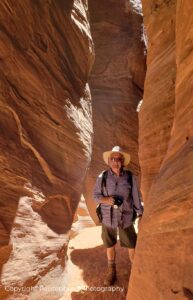
Hikes in Wire Pass and Buckskin Gulch were bucket list events for me.
My wife Debbie and friend Kelle Barfield of Vicksburg, Mississippi went with me. We each had plenty of water, sunscreen and appropriate clothing for hot weather. The trailhead parking lot had about 200 vehicles in it when we set out – it was hardly a lonely jaunt. But I noticed all levels of preparedness, from folks in flip-flops and tank tops to seasoned desert hikers. I like to think I fit in the latter category!
Hikes like this really test your gear.
These items worked for me.
Wide-brimmed hat: A hat is more than just decoration or style. Rather, we need the best protection from the elements, from freezing temperatures on up. My vote goes to a broad brimmed – say 3-1/2 inches wide – wool fedora. A fedora has been my headgear choice for decades of outdoor activities.
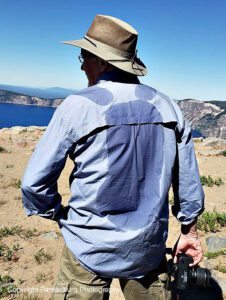
The day was hot at Crater Lake, Oregon, but the shirt stayed cool. This is what it looked like when I took off my daypack.
I wear my Buffalo Wool wool hat much of the time on desert excursions. But for this trek, I opted for a wide-brimmed, mesh-crowned hat. It offered protection from the sun and wind, and the mesh allowed sweat to evaporate and cool my head.
Beretta long-sleeved shirt: There has never been a sunscreen I couldn’t sweat off. So I always wear a long-sleeved, breathable shirt for protection from the sun and wind.
This fishing/shooting shirt from Beretta has been used hard in the desert and on the Mississippi River with Quapaw Canoe Company. I like the quick-drying material, the light coloring and the long sleeves, I generally sweat through it in the heat, but the shirt dries quickly, so it is never cold and clammy when the sun goes down.
The great majority of the people I saw on the Wire Pass trail had virtually no sun protection – I couldn’t count the number of tank tops! Many, many hikers slathered on sunscreen and apparently assumed that was enough. (It might have protected from sunburn, but it did nothing to shield them from the heat.) Few wore appropriate hats. In the desert heat, this could have been a recipe for disaster.
Many people don’t consider long sleeves for sun protection. If they do, they wear sleeves that are too short. I like sleeves that almost cover my hands – ideally, these are generously cut and almost puffy. They will be easy to roll up, and when paddling, the sleeves will cover parts of your hands.
Danner Boots: Danner Incursions were my choice for footwear. They are an eight-inch-high hot weather boot that can be substituted for military footwear.
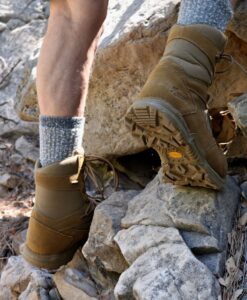
The Danner Incursions proved to be excellent desert hikers.
Incursions (and the shorter Fullbore Coyotes) look like they should be hot, but I found them to be the coolest hot weather hiking boot I’ve ever worn. The rocks in the canyon were hot enough to fry an egg on, but my feet stayed very comfortable. The high boots also offer a measure of protection again cactus spines, sharp rocks and possibly snake bite. Most snake bites occur on the foot or ankle, so the eight-inch height just might come in handy.
Sandals and flip-flops were common on the trail. They may be cool, but they offer little to no protection to the entire foot
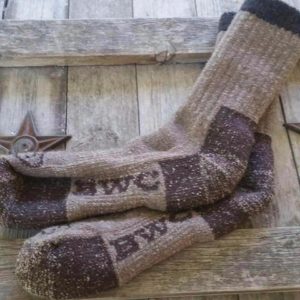
I wear these heavy Buffalo Wool socks year-round.
Buffalo Wool socks: Wool socks in hot weather? You bet – that’s all I wear year round. Wool doesn’t absorb moisture very well, and the material breathes. Compare that to standard cotton athletic socks – the cotton holds moisture and stays perpetually soggy.
I’ve been a Buffalo Wool user for several years now, and they are my go-to sock for hot and cold weather. They came through as expected in the Arizona desert
Knife: I always carry a knife. Since I field test knives, I will generally carry a proven one as the backup to the newbie. In this case, I packed my time-tested Bark River UP Bravo and a Carp Knives LP.
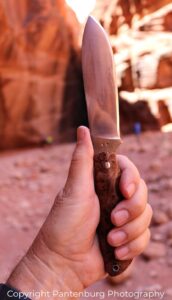
The Carp Knives LP was only used to spread peanut butter. It could have done a lot more.
The LP was made to my specifications, and it goes without saying that I really like it. I’ll have to wait for hunting season to completely wring it out, but the LP has worked fine so far for camp tasks and as a backpacking knife.
Turns out, I didn’t need a knife at all, but I won’t go into any outdoor adventure without one. The LP was nice to look at during a break in the walk, and it spreads peanut butter on crackers very well. The LP also does a good job of removing sardines from cans.
So how did the hike come out?
Indescribably well! Around every corner there was something new to see, and the rocks and crevices defy description. I was not disappointed at all – the area exceeded my very high expectations.
The highpoint of the hike was when Kelle placed some of her father’s ashes in one of the crevices in Buckskin Gulch. Kelle is world traveler, and only the best places in the world become the repository of her dad’s ashes. Debbie and I didn’t know of Kelle’s intentions before hand, and if the canyon had not met the natural world awesomeness criteria, Kelle would not have left any ashes.
It was a reverent moment in one of God’s natural cathedrals. I felt honored to be included.
Please click here to check out and subscribe to the SurvivalCommonSense.com YouTube channel – thanks!
Here are more images from Wire Pass and Buckskin Gulch:
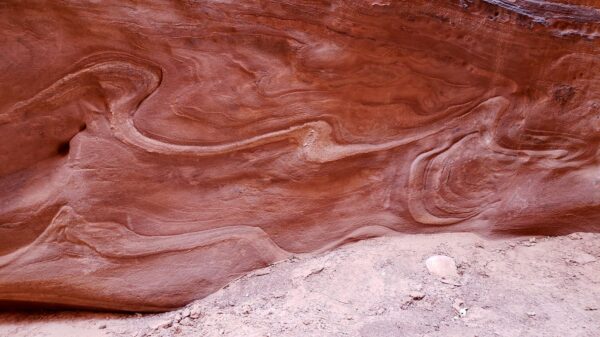
Patterns in the canyon walls.
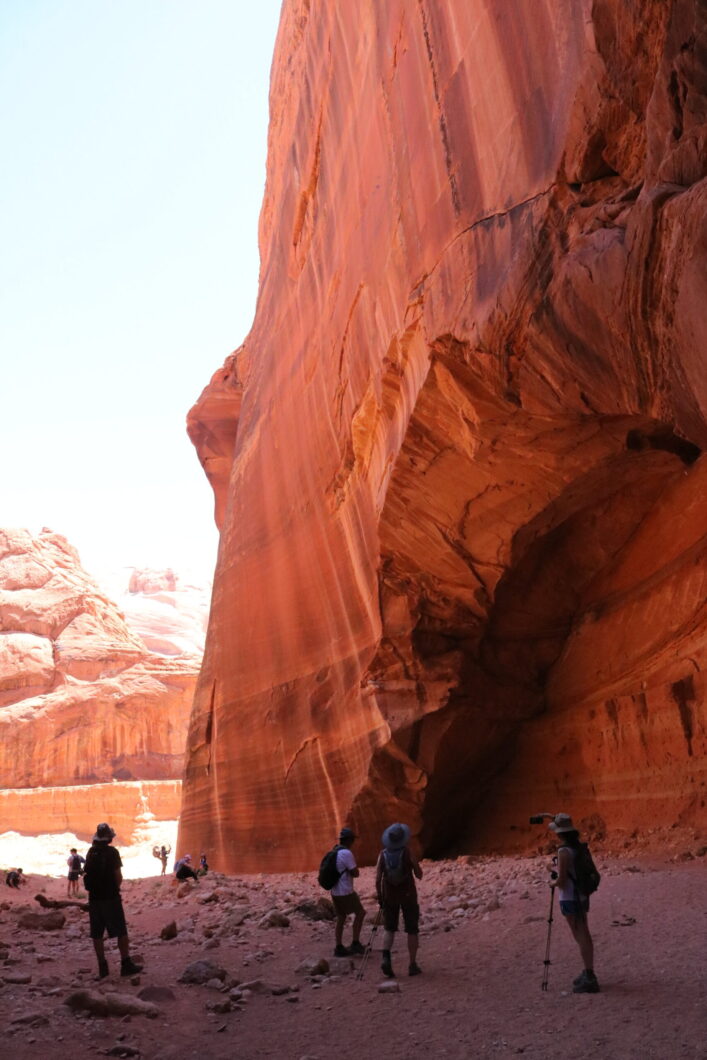
Intersection of Wire Pass and Buckskin Gulch.
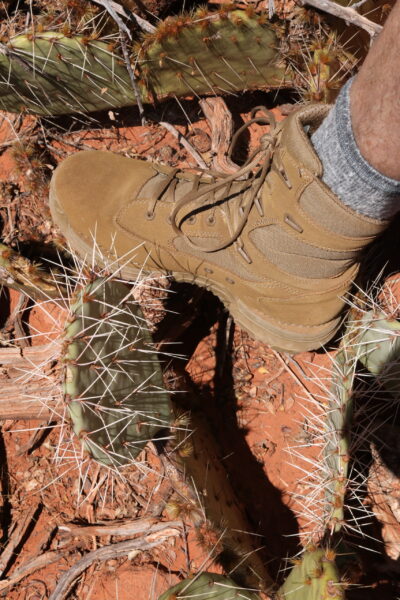
Desert boots should protect your feet from all sorts of stickery things.
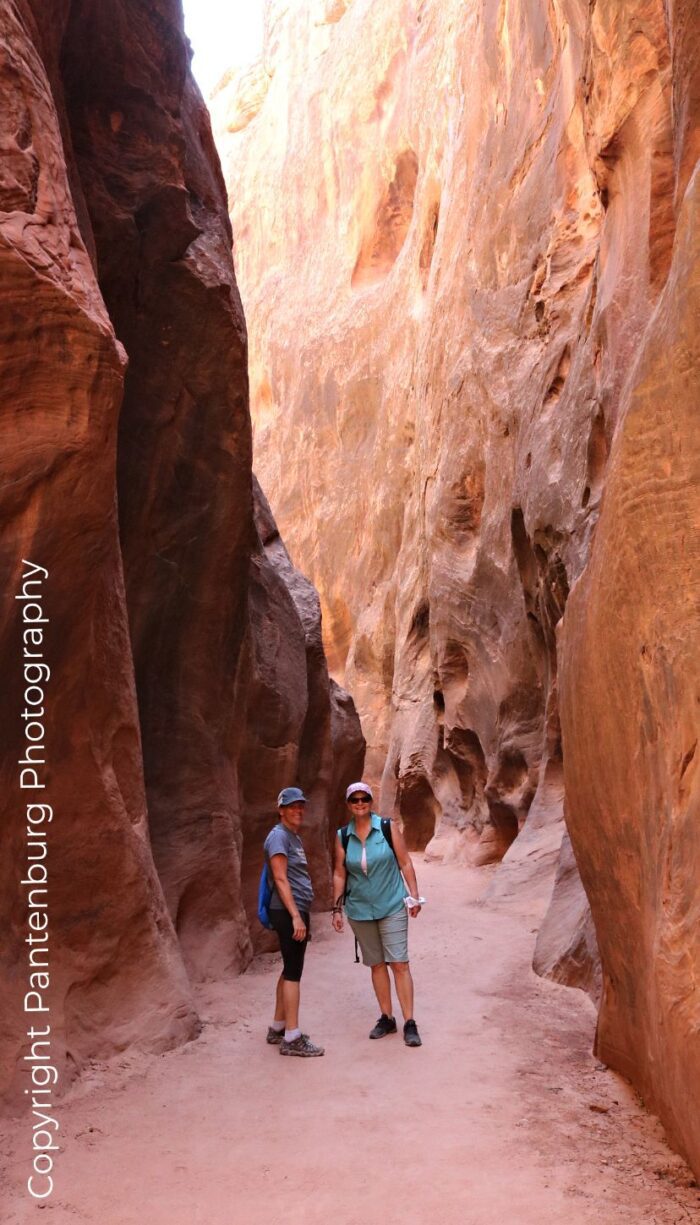
Kelle and Debbie in Wire Pass.

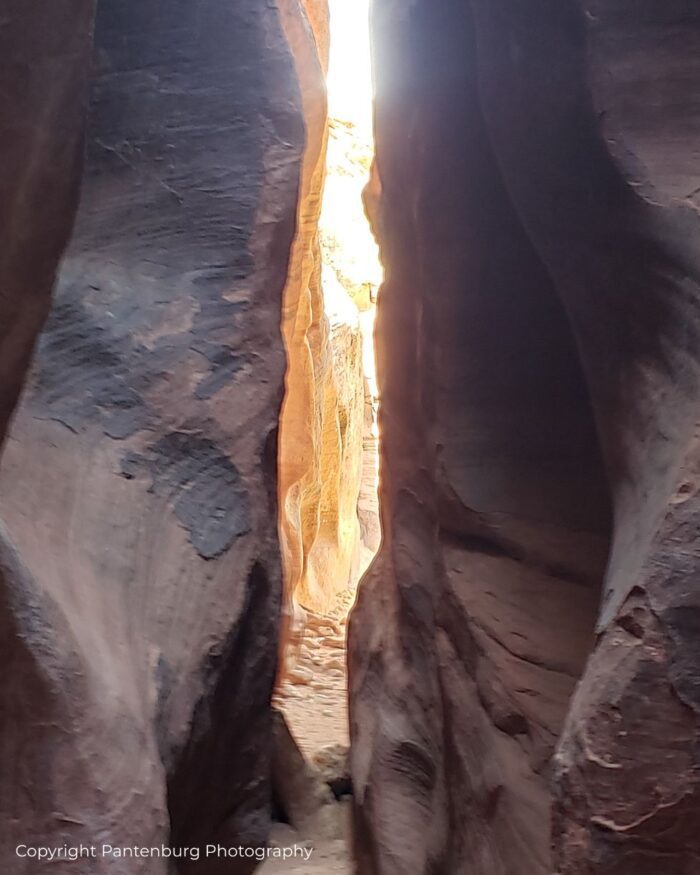
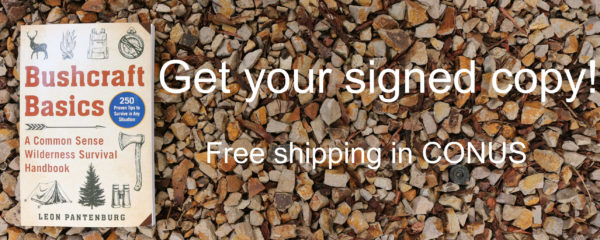
Leave a Reply